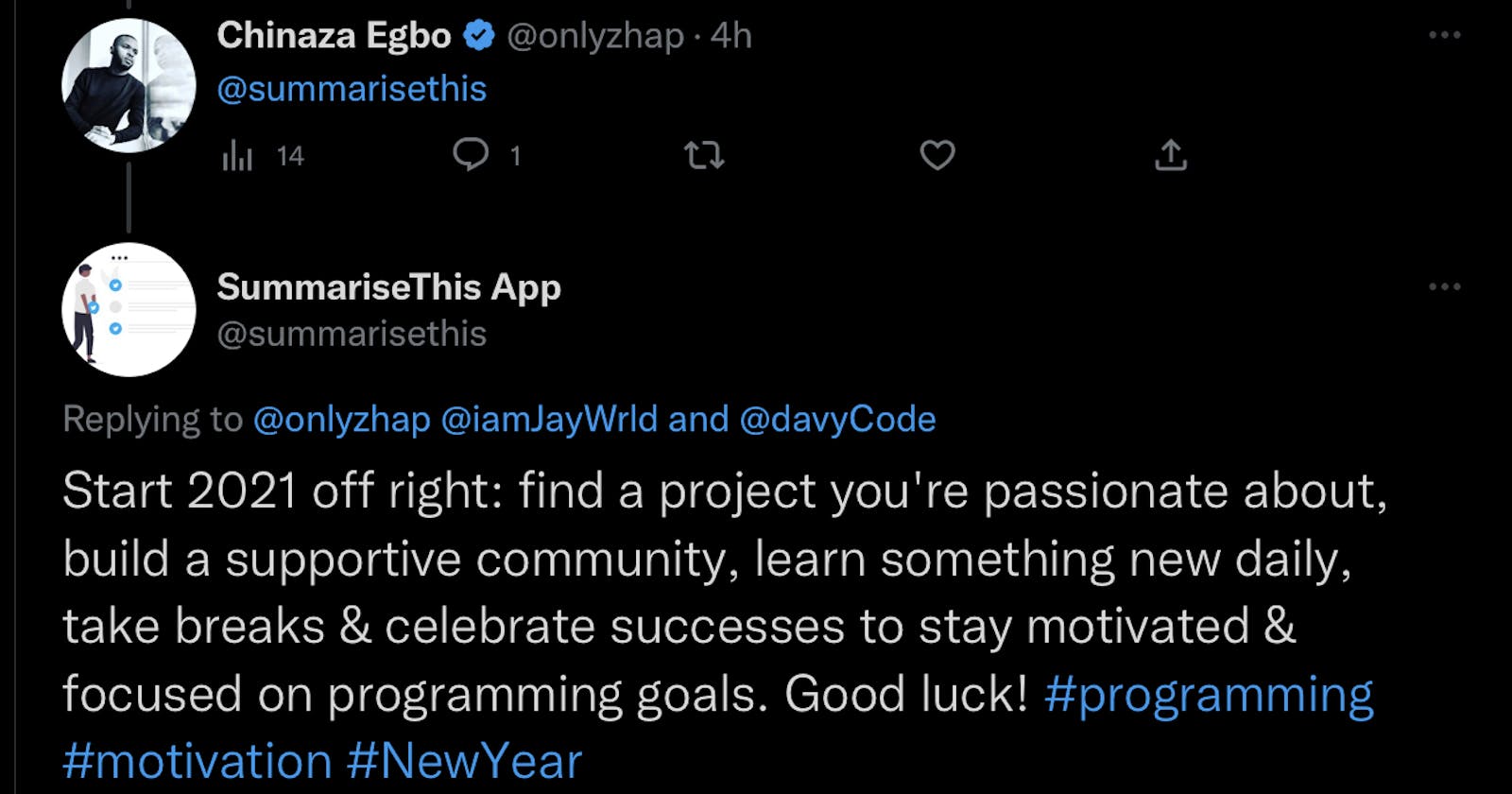The GPT-3 Powered Twitter Thread Summariser Bot: A Technical Overview
Leveraging OpenAI, Python, and the Twitter API to Build an AI bot for summarising Twitter Threads
Have you ever found yourself scrolling through a long Twitter thread, trying to piece together the main points and ideas being discussed? Let’s take a journey through the GPT-3 Powered Thread Summariser Bot, a bot that can quickly and accurately summarise a thread in a single tweet.
As a software engineer, I'm always looking for ways to leverage technology to solve real-world problems. I've been following the hype and trend around OpenAI GPT-3 models with great interest. So when I saw the opportunity to use it to build something practical and useful, I jumped at the chance. I was inspired to create this tool after noticing the overwhelming amount of information being shared on social media, particularly on Twitter. I saw an opportunity to use the power of GPT-3 to help users quickly and easily understand the key points being discussed in a thread, without having to spend time scrolling through lengthy posts.
But how does this bot work, and what technologies were used to build it? In this technical overview, I'll discuss the inner workings of the GPT-3 Powered Thread Summariser Bot and the role that OpenAI, Python, and the Twitter API played in its creation.
At the heart of the GPT-3 Powered Thread Summariser Bot is the GPT-3 (Generative Pre-trained Transformer 3) machine learning model from OpenAI. This state-of-the-art model was trained on a massive dataset of text, including books, articles, and websites, and has the ability to generate human-like text that is both coherent and relevant to a given prompt.
To build the bot, I utilized the OpenAI API to access the GPT-3 model and Python to write the code that consumes the Twitter API and processes the threads. Here's a snippet of the code that shows how the bot fetches a thread and generates a summary using the GPT-3 model:
import openai
def summarise_thread(thread_id):
# Fetch the thread using the Twitter API
thread = fetch_thread(thread_id)
# Use the GPT-3 model to generate a summary of the thread
model_response = openai.Completion.create(
engine=MODEL_NAME,
prompt=f"Summarize the following thread: {thread}",
max_tokens=MAX_TOKENS,
temperature=TEMPERATURE
)
summary = model_response['choices'][0]['text']
return summary
The GPT-3 model is used to generate a summary of the thread based on a prompt that includes the full text of the thread. The max_tokens and temperature parameters control the length and creativity of the summary, respectively.
In addition to the GPT-3 model and the Python code that powers the bot, the Twitter API played a significant role in the development of the GPT-3 Powered Thread Summariser Bot. The Twitter API allows the bot to access and process threads on the platform, enabling it to generate summaries in near real-time. Using the Twitter filtered streams API provided an avenue to filter and stream tweets that mention the bot’s handle @summarisethis. See code snippet below:
# Set up the Twitter streaming API
stream = tweepy.Stream(auth, MyStreamListener())
# Listen for mentions of @summarisethis
stream.filter(track=['@summarisethis'])
The GPT-3 Powered Thread Summariser Bot has the potential to be a valuable tool for saving time and staying informed on important topics and discussions taking place on social media. With the explosion of content on social media platforms like Twitter, It also helps reduce the cognitive load of sifting through long threads, making it easier for users to consume and process information.
As the popularity of the @summarisethis bot grows, it's important to consider the ethical implications of using machine learning and AI in this way. While the bot can certainly be a valuable tool for saving time and staying informed, it's important to remember that it is not a replacement for human judgment and critical thinking. It is simply a tool that can assist us in our daily lives.
Looking towards the future, the potential for AI to revolutionize and improve our daily lives is enormous. From automating mundane tasks to providing personalized recommendations and assistance, AI has the power to make our lives easier and more efficient. As AI technologies continue to advance, it will be exciting to see the ways in which they will continue to shape and impact our world. @summarisethis is just the beginning. I believe that there are a lot of potentials for AI to be used to improve the way we consume and understand information online. As software engineers, it is our responsibility to continue pushing the boundaries of what is possible with AI and to use it to create meaningful and useful tools in a responsible way.
I hope this technical breakdown of how I built @summarisethis was helpful and gave you some ideas for your own projects. Thank you for reading! If you're looking to quickly and easily summarise long Twitter threads, give it a try! Mention @summarisethis in reply to any thread and watch the magic happen. Don’t forget to follow @summarisethis to get informed on updates.

